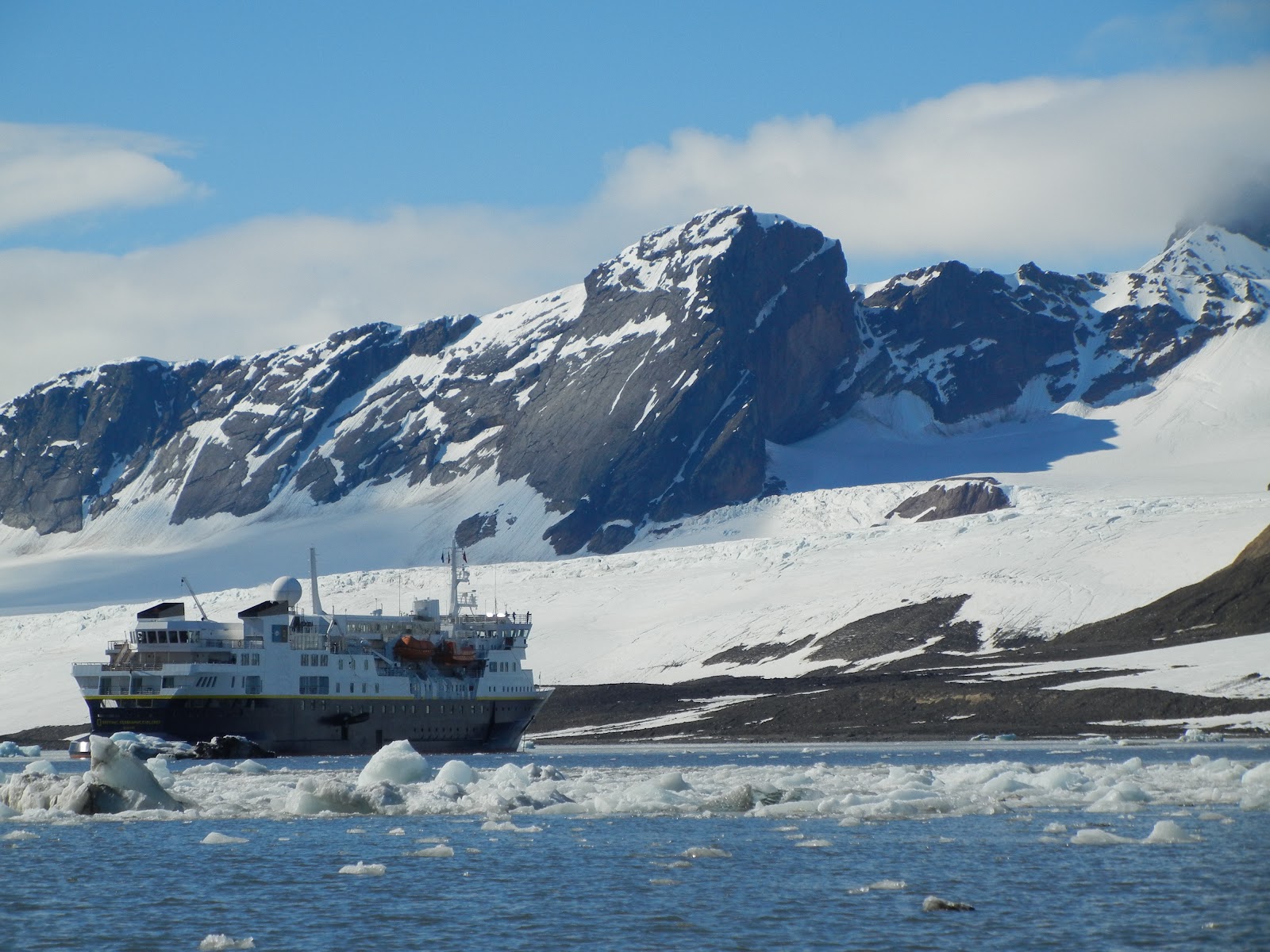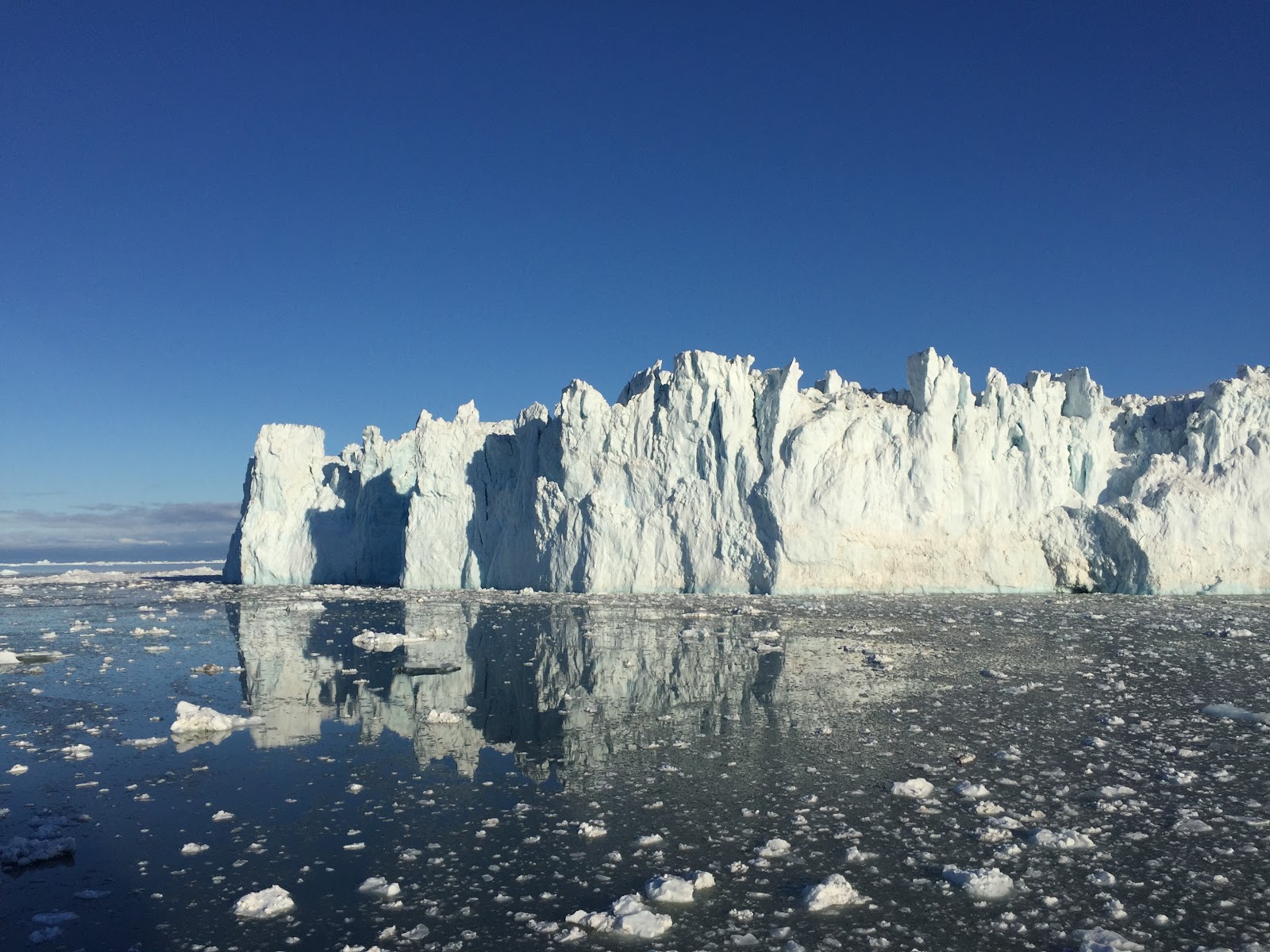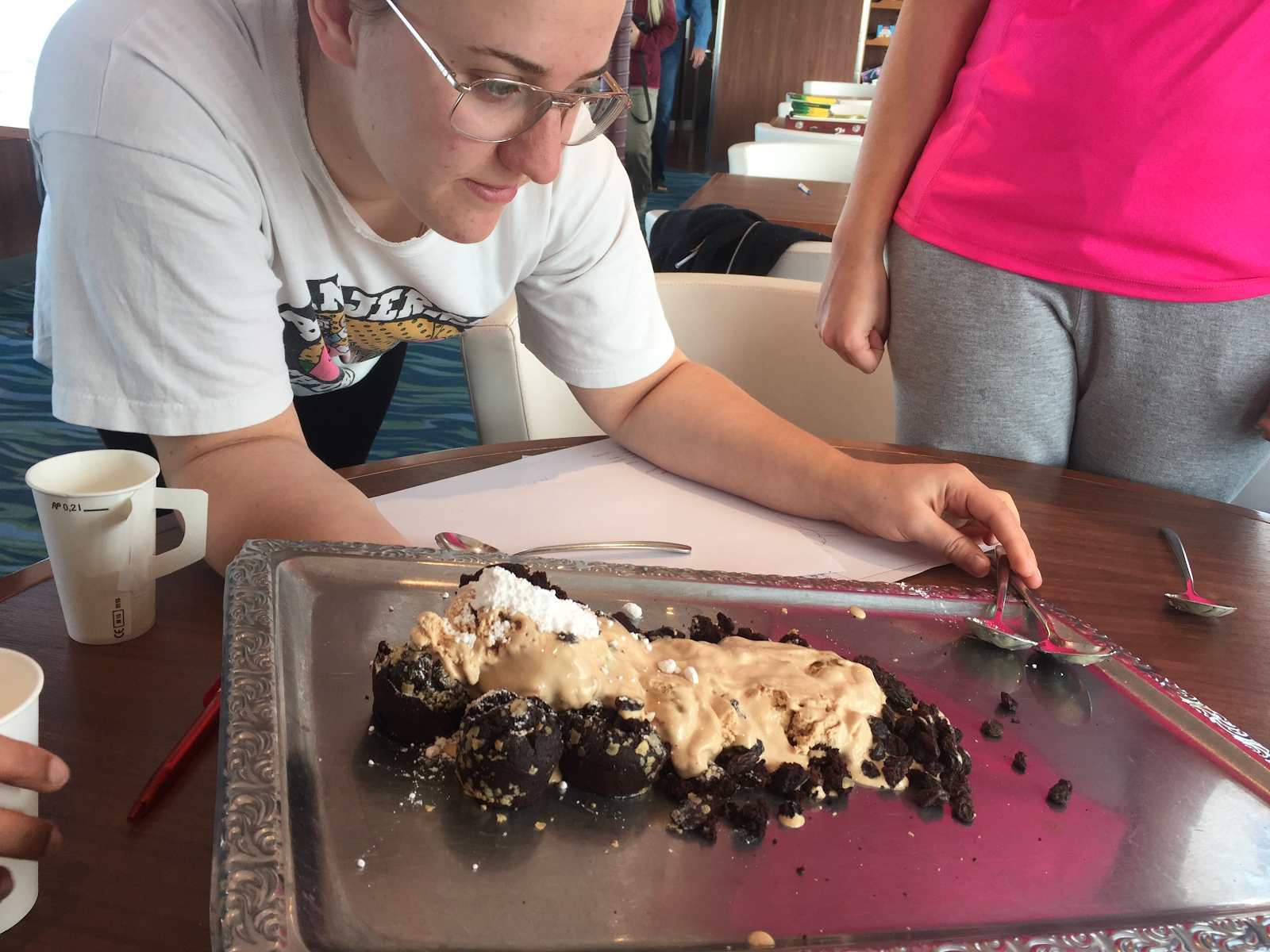by Debra Norby Colgate, Fourth Grade Teacher, Salida

Day 0:
Dear Diary, Ok I made it to Albuquerque with a brief stop at Meow Wolf in Santa Fe. Not really sure what I saw there, but I feel a geographer should do a study on that place, maybe even a story map, but I don't think even that would get me to an understanding of that place. It was time to scout the Old Town neighborhood for museums, breweries, happy hours and possible eating establishments...any opportunities for live music and then hit the hay and come out in the morning running. Mission accomplished.
At breakfast, I can smell it. There are teachers here! I have already met three teachers from Colorado and I haven't opened my mouth yet. My social anxiety has already lessened; I have met comrades from my home state! I admit, I'm feeling a little nervous at this point, they are geographers, but I do have quite a bit of experience at conferences and how to make the best choices...it's just a matter of enacting my master plan to session planning. Yes, I am a master at planning! I am feeling somewhat confident at this juncture. At the conference registration table, what do I find? Very helpful volunteers guiding me to refreshments! I am so happy there is coffee, or did I just steal coffee? I suppose I should write my master plan for the conference so I don't get side-tracked, I am a seasoned, professional, conference goer, albeit.
Master Plan for Conference Planning
Day 1 - Theme Day - This year it is Native Americans and beefing up that unit for Colorado History for my students.
Day 2 - Tech Day - Yep this could be very possibly one of my "f" days-fruitful or frustrating.
Day 3 - Panic Day - Whatever-I-can-use-this-next-school-year day- I am not panicking, but I need the next big great idea for next week!

Day 1 - Theme Day
Dear Diary, Ok on to my first session. I love Primary Sources, so what could be better than Maps that are Primary Sources?? Carol Warren was a great presenter! We did engaging lessons with our session attenders, always a plus to start the day. I have so many resources to look up! Next session: "Native Americans and Indigenous People in Comic Books and Graphic Novels: How Representation Matters" (I thought the last session's title was long?) Mr. Rollins presented numerous books on the topic for different age levels. I already have an idea for my Native American storytelling unit and how to integrate with geography. Did I think of it, or did he? See I am on the collaboration geography train. So proud of myself!
Next session, whaaaaaat...there are none? I get to explore, without feeling guilty? This is the best conference EVER!
Brooke Runnette is a very engaging speaker. What a cool life she must have? I wonder how one person could possibly do that much. She probably has no kids? Right? There's a reception with food later? YES! Best conference ever!
Click here to read the full article.
Grosvenor Teacher Fellowship: A Life-Changing Expedition to the Arctic
by Jenny Bolch, Second Grade Teacher, Boulder

Hearing the thunderous crash of a glacier calving next to you in the bright sunlight of midnight isn't something you can read about in a textbook and appreciate. Without feeling how powerful this is with the percussion and reverberating boom and nearby icebergs spinning from the impact, then why would you care about connected issues like the glaciers melting and climate change as a part of our daily reality?

Each year, National Geographic and Lindblad Expeditions select thirty teachers to go on expeditions through the
Grosvenor Teacher Fellowship Program
to help solve this problem. As one of these teachers, it is my job to find ways to bring this experience back to my classroom and community.

As we explored Svalbard, Jan Mayen, Greenland's east coast and Iceland's west coast via the National Geographic Explorer ship, I felt like I was on board a floating school. We had experts from around the world teaching us throughout the expedition. We landed almost every day in a new and remote location (field trips!) and spent the evenings having the day's information presented to us like classes. As we hiked through the snow, experts in arctic flora pointed out the Svalbard poppy that only grows in tiny ravines where it can be protected from the harshest winds and drink the limited water that collects there. Experts in arctic fauna explained the differences between each whale that popped up next to our ship and why it wasn't a good idea to break too much ice, despite the ship's icebreaking capability, because it would cut back on the polar bear's hunting season. National Geographic photographers gave us tips on how we could get better shots to share our stories.
 Geologists and polar divers passionately explained the changes that warming temperatures have on the arctic regions. Deep sea and arctic explorer Joe MacInnis spent hours inspiring me with his stories and wisdom about teamwork and leadership in high-risk environments. Here is a
video
interview I did with him about how children can become explorers.
Geologists and polar divers passionately explained the changes that warming temperatures have on the arctic regions. Deep sea and arctic explorer Joe MacInnis spent hours inspiring me with his stories and wisdom about teamwork and leadership in high-risk environments. Here is a
video
interview I did with him about how children can become explorers.
 I took copious notes on everything we learned and worked with the teen group on board the ship to turn each major concept into a hands-on experiment that a second grader could learn from. Each experiment would need to be something that could be replicated by teachers that were not on board the ship, but in their own classrooms, as well as have some larger "what's the point?" connection. We constructed scientifically accurate glaciers out of ice cream and learned about why glacial rivers are silty, how climate change effects glaciers and what we can do to help. We took a presentation on thermoclines and designed an experiment with hot and cold water dyed with food coloring to show why arctic waters are more productive and how this could be affected with even a few degrees of temperature change in our oceans.
I took copious notes on everything we learned and worked with the teen group on board the ship to turn each major concept into a hands-on experiment that a second grader could learn from. Each experiment would need to be something that could be replicated by teachers that were not on board the ship, but in their own classrooms, as well as have some larger "what's the point?" connection. We constructed scientifically accurate glaciers out of ice cream and learned about why glacial rivers are silty, how climate change effects glaciers and what we can do to help. We took a presentation on thermoclines and designed an experiment with hot and cold water dyed with food coloring to show why arctic waters are more productive and how this could be affected with even a few degrees of temperature change in our oceans.
We used melting ice cream and an apple to demonstrate the effects of permafrost and then designed a structure to keep the apple from sinking into the ice cream, explaining why houses in Svalbard and other places with permafrost can't be built directly on the ground. Over the next few months, I will be trying out these lessons and many others I have been working on with the second graders in my class. When the full curriculum is completed, teachers will be able to access it
here.
Another project I'm working on is writing and illustrating a series of children's books about important global issues. This expedition inspired one about climate change and how it affects animals in Polar Regions in a way that is consumable by young children. It will have a non-fiction section in the back of the book that tells ways that kids and teachers can take action to help make a difference.
This opportunity has been incredibly inspiring and powerful for me. It has launched me in a direction that will allow me to share what I have learned with my students and teaching community, a direction that will hopefully make a small difference in the world.
Click here to view the article and see more pictures.
Geo-Inquiry Training
by Heidi Ragsdale, Eighth Grade Science Teacher, Grand Junction

Inquiry-based learning has always had a place within my 8th grade STEM science classroom, at West Middle School in Western Colorado, but imagine joining a full-on nationwide opportunity to help students learn to be active community problem solvers! This was my experience this summer as part of National Geographic's Geo-Inquiry professional development.
Mike Gregorich, our school's STEM tech teacher, joined me at National Geographic's Headquarters in Washington D.C., along with 49 more states worth of eager educators, to learn the steps of the Geo-Inquiry process, which take students through 5 steps from Asking a question to Acting on a community implementation plan.
The process is simple: Ask, Collect, Visualize, Create and Act.
Mike and I joined teams of educators and navigated our way through the National Mall, monuments and all around our nation's capital in order to utilize the steps of the Geo-Inquiry Process, from collecting air samples, to tree specimens counts, all the way through producing a movie about a local D.C. concern.
Some favorite moments from our training were working with the National Geographic education team, engineers and storytellers who inspired us to not only use the Geo-Inquiry Process with our students but to also help us understand how the generations of National Geographic leaders have told their own stories about our Earth.
With its roots in both Problem Based Learning from the Buck Institute, Citizen Science and National Geographic's forces on attitudes, skills and knowledge of local regional and global impacts, this Geo-Inquiry process can help students bring direct change to our world!

Following the June training, the goal of the Geo-Inquiry training is to share with teachers across the country. So look for more information coming soon from COGA and the Colorado Geo-Inquiry trainers from Grand Junction's West Middle School, Heidi Ragsdale and Mike Gregorich. Geo-Inquiry process can help students bring direct change to our world!
Cherry Creek Teacher Gets Field Experience of a Lifetime in South Korea
by David Valdez, High School Teacher, Greenwood Village

This past June, David Valdez, an Advanced Placement Human Geography Teacher at Cherry Creek High School, traveled with Western Michigan University professor Dr. Joseph Stoltman and 16 other AP Human Geography teachers from the United States to participate in an eight-day field study and conference in South Korea.
The AP Human Geography teachers participated in the Eighth Annual Geographic Naming Conference, which focused on the geopolitics of the Korean Peninsula and the territorial and geographical naming issues that have persisted since the end of World War II.
The naming issue is one of particular interest to the Koreans as they have worked to convince Western mapmakers to create the dual name of the Sea of Japan/East Sea on maps to honor the historical names each country uses for the body of water. Other issues included discussion about the Dokdo Islands, a pair of disputed islands located between Korea and Japan.

As part of the field study the group visited Panmunjom in the Demilitarized Zone between North and South Korea. The tour of the area included a visit to the Joint Security Area buildings straddling the border used for negotiations between the countries.
An overnight stay at the Seonusa Buddhist Temple provided insight into the teachings and practices of Korean Buddhism as well as the opportunity to participate in several temple rituals, including evening and morning chants, and a ritual of 108 prostrations.
Visits to historical sites, including several UNESCO Cultural Heritage sites, museums and a tour of the Hyundai Truck Assembly plant were also part of the field study; ample time was provided to explore the historic sites of Seoul.

The trip was organized by the Northeast Asian History Foundation, which paid for the teachers' airfare, hotel and field study and related professional activities during the visit. The NAHF sponsors this trip every year for a new group of AP Human Geography Teachers.
Click here to view the article and see more pictures.